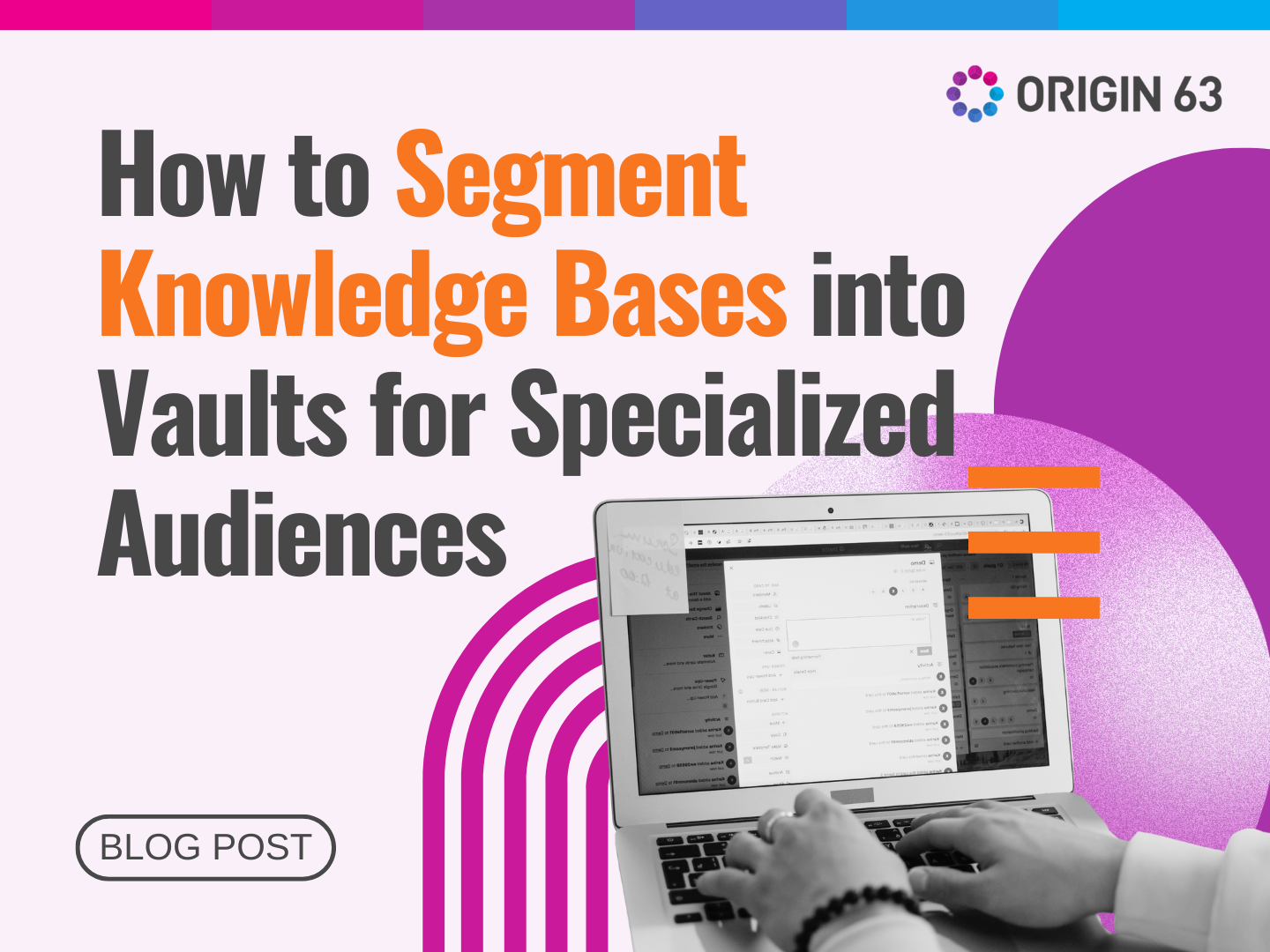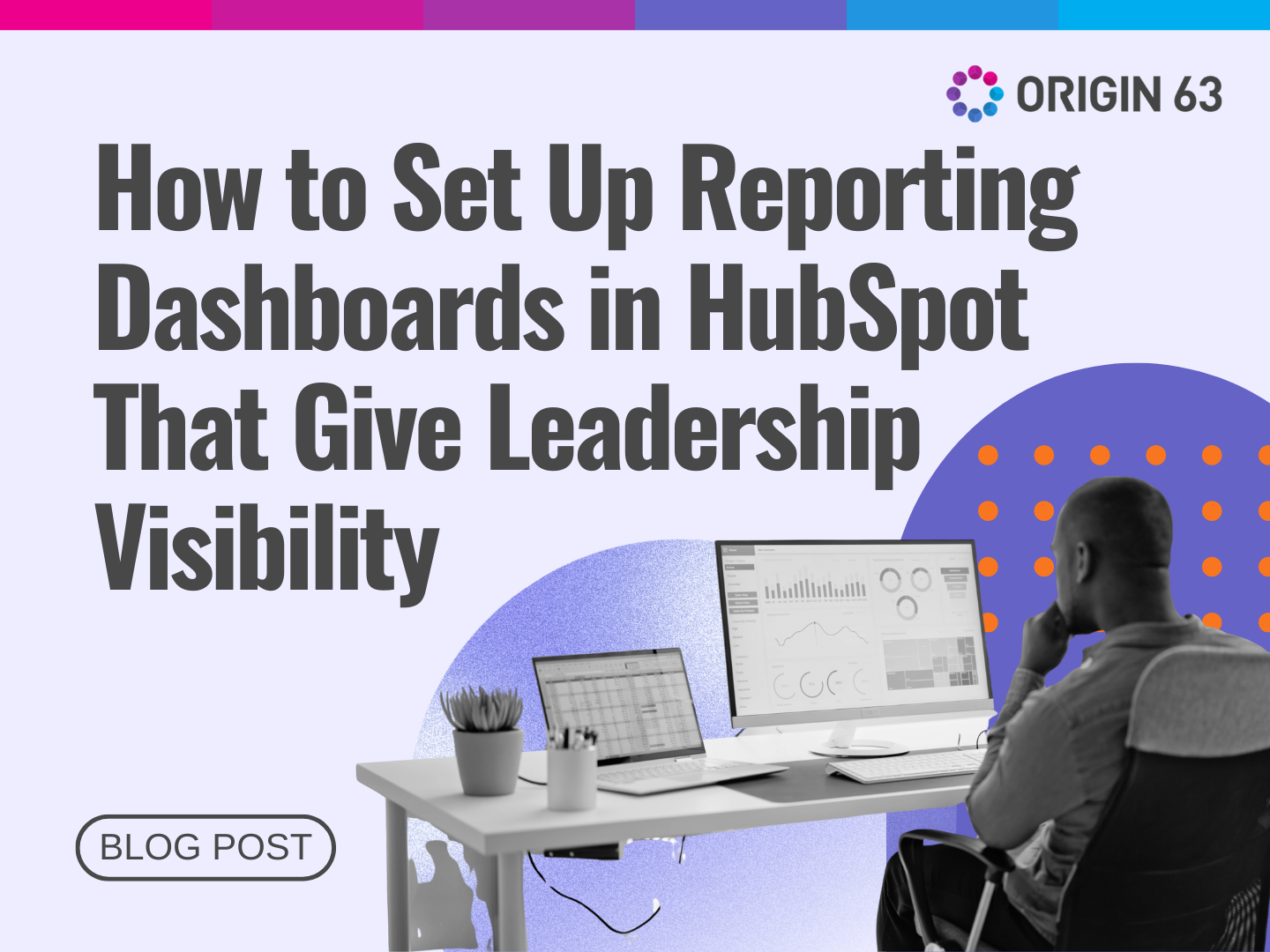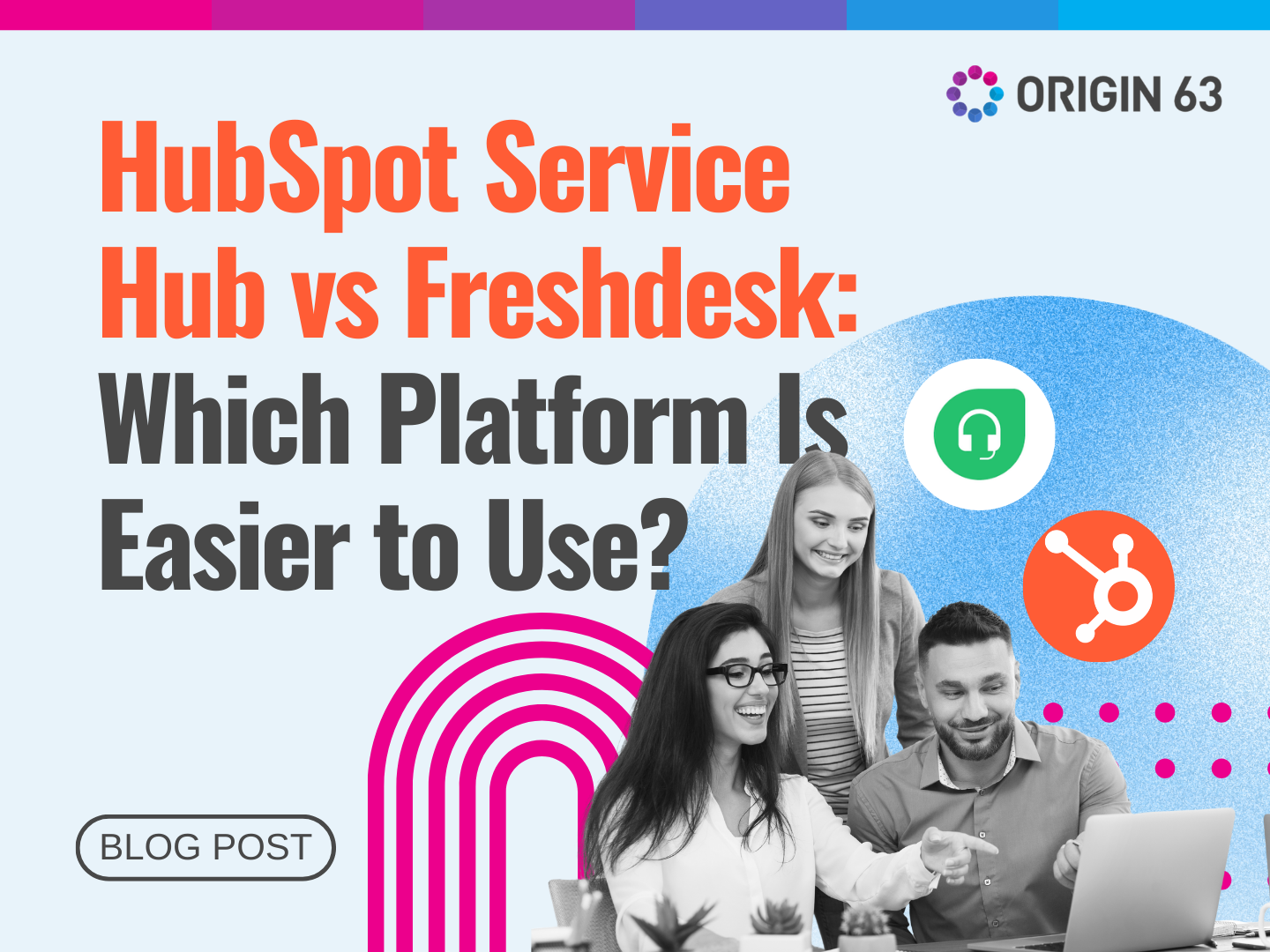In customer service, the little things matter. Resolving a customer's issue or closing a sale—that's the bare minimum. You should go the extra mile to truly delight your customers and turn them into loyal advocates.
One detail that's easy to overlook but incredibly important? Post-interaction follow-ups.
Follow-ups show your customers that you genuinely care about maintaining the relationship, not just completing a transaction. They also give you valuable opportunities to capitalize on positive customer reactions and nip dissatisfaction in the bud.
In this post, we’ll share how you can use HubSpot's Service Hub to improve customer service with personalized follow-up actions.
Customized Follow-up Actions Based on Client Satisfaction

Providing great customer service doesn't end when you resolve an issue or close a sale. You should always follow up.
Follow-up actions are the steps you take after a customer interaction to continue nurturing that relationship. These can include sending a satisfaction survey, reaching out to address any remaining concerns, offering additional resources or solutions, etc.
The most effective follow-up actions are tailored to the customer's specific level of satisfaction. That's where having a clear understanding of the "customer satisfaction spectrum" comes in.
The Customer Satisfaction Spectrum
Customer satisfaction can be divided into a few levels. For example:
- Delighted Customers: These customers had an overwhelmingly positive experience. They're thrilled with your product or service and are highly likely to become loyal, vocal advocates.
- Satisfied Customers: These customers had their needs met and are content but not necessarily over the moon. They may be open to additional products/services but aren't as likely to refer others.
- Dissatisfied Customers: These customers are frustrated by a poor experience. They may be on the verge of churning and need extra care to win back.
- Irate Customers: These are the most upset customers. They'll likely vent publicly and discourage others from doing business with you.
Crafting Customized Follow-Ups
You should tailor your follow-up actions based on where each customer falls on this spectrum. For instance:
- Delighted customers may appreciate an invitation to provide a testimonial or case study.
- Satisfied customers could benefit from cross-sell or upsell offers.
- Dissatisfied customers may need a personal phone call to understand their concerns.
- Irate customers require swift, empathetic responses to address their issues and salvage the relationship.
Using a tool like Service Hub helps you automatically trigger the right follow-up workflows based on customer satisfaction survey results. This ensures each customer receives the personalized attention they deserve.
3 Follow-up Actions for Happy Clients

The customer satisfaction spectrum ranges from delighted to irate customers. Your follow-up actions should be tailored to each customer's location on the spectrum.
Here are three impactful follow-up strategies to consider for satisfied clients:
1. Send Customer Satisfaction (CSAT) Surveys
This goes for everyone—not just happy clients. Why?
CSAT surveys let you get direct, real-time feedback from customers about their experience. They provide valuable insights to identify areas for improvement and ensure you're consistently meeting (or exceeding) their expectations.
In HubSpot, you can automatically send a brief CSAT survey after a customer interaction, asking them to rate their experience on a scale of 1-5. Include an open-ended question for additional comments or suggestions.
The surveys can be sent via email or embedded right into chat conversations. You can customize the survey questions and scale to fit your needs.
Even if a customer was dissatisfied, you’ll know why. Then, you can make appropriate reparations and improve your service next time.
2. Direct Positive Feedback to Account Managers
When customers provide glowing feedback, you should ensure the relevant teams know. Then, your account managers follow up, strengthen the relationship, and explore opportunities for upselling or cross-selling.
You can set up an automated process to notify a customer's dedicated account manager whenever positive feedback is received.
HubSpot lets you do this through workflow automation connected to your CSAT surveys or other feedback channels. For example, you can set a workflow to create a task anytime a CSAT score of 5/5 is submitted, along with positive comments.
3. Encourage Positive Reviews and Testimonials
When a customer says they’re happy with your service, don’t be shy about requesting a review or testimonial. After all, most people won’t give you one if you don’t ask.
Positive online reviews and testimonials can help attract new customers and strengthen your brand reputation.
In HubSpot, you can build a workflow that automatically sends a testimonial request email to customers who submit a high CSAT score and positive feedback. The email can include a link to submit the review directly.
3 Follow-up Actions for Unhappy Clients
Of course, not every customer interaction will be a glowing success. If you manage to upset a client, not to worry—all is not lost. The right follow-up actions can help you turn the situation around.
1. Initiate Support Tickets for Timely Issue Resolution
When a customer voices a complaint or concern, create a support ticket on their behalf and assign it to the appropriate team. This shows you're taking their feedback seriously and working to address it proactively.
In HubSpot, you can easily create a support ticket based on customer feedback received through various channels like email, chat, forms, etc.
The centralized inbox lets you view all customer communications across these channels. From there, you can quickly convert any comment or question into a support ticket with just a few clicks.

You can also set up automation rules to automatically create tickets based on certain triggers, like specific customer comments or low CSAT survey scores. The ticket will then be automatically routed and assigned to the proper team or rep for resolution.
2. Communicate Proactively to Rebuild Trust
For customers who had a recent service hiccup, follow up to ensure the issue was resolved to their satisfaction and provide a status update, even if they haven't reached out again. This demonstrates your commitment to making things right.
HubSpot's Ticket Pipelines make tracking and following up on customer issues easy. You can customize your pipeline with stages like "Waiting on Customer" or "Pending Resolution."

Automated workflows can then be triggered based on ticket status. For example, if a customer's ticket has been stuck in "Waiting on Us" for more than 48 hours, you can send a follow-up email.
The shared inbox view gives your team full context into previous customer communications and issues related to that ticket. This ensures no detail is missed when following up after an incident.
3. Implementing Corrective Measures Based on Feedback
Finally, review trends in your customer feedback and use that to identify areas for improvement in your products, services or processes.
Then, communicate the changes you're making in response to customer input. This helps address the root cause of any issues and shows unhappy customers that you're listening and making real changes based on their feedback.
HubSpot's reporting tools analyze your service and CSAT data to spot recurring issues and pain points.
You can view ticket volumes, handle times, and satisfaction scores broken down by product, agent, or customer information attributes, which makes it easier to pinpoint improvement areas.
The Knowledge Base tool can then be updated with new articles or solutions based on the feedback received. You can also use email marketing tools to share updates on process changes or new resources with customers who have issues in that area.
Subscription and Interaction Strategies

Don't just ask for your customers' opinions after a support interaction or transaction. As a business, understanding how your customers and audience think matters, even when they're simply interacting with your content.
Whether it's a video, blog post, or any other type of content, involving your audience and inviting their feedback gives you invaluable insights. You'll learn what they truly want and enjoy, so you can give them more of that in the future.
Consider these strategies:
Encouraging Viewers to Share Questions and Opinions
Make it easy and encourage your audience to share their thoughts, questions, and ideas directly within your content.
This could be through comment sections, survey forms, or interactive elements like polls or Q&As.
For instance, at the end of a blog post, you can include a call-out box asking what other topics the reader wants to learn about and invite them to answer in the comments. Or, you can embed a simple poll like "What was your biggest takeaway from this post?"
The more you can facilitate an open dialogue, the better you'll understand your audience's needs and pain points.
Fostering a Collaborative Online Community
Go beyond asking for feedback and build an engaged online community where your customers and audience can connect.
This creates a feedback loop in which they speak to you and share their insights and ideas with each other. It strengthens those relationships and gives you an even deeper understanding of your customer base.
Let’s say you create a Facebook or LinkedIn group for your customers. Then, you can encourage discussion by posting prompts like "What are your biggest challenges with [topic]?" Participants can bounce ideas off each other, and you’ll learn more about their pain points!
Closing the Content with a Call-to-Action for Viewer Participation
Don't let your content end without a clear invitation for your audience to share their thoughts. A simple CTA like "Let me know what you think in the comments below!" or "Take our 2-minute survey to help us improve" can go a long way in kickstarting that valuable dialogue.
You're creating an opportunity for them to participate and provide feedback. Plus, it gives you insights into their thinking and helps you improve your content or offerings based on their input.
Creating a Dialogue for Continuous Improvement and Learning
Your end goal is to use these viewer interactions not just for the content but to continuously improve your overall offerings.
Synthesize the feedback you receive to identify trends, address pain points, and develop new ideas that truly align with what your customers want. It's an ongoing process of learning and enhancement.
Benefits of Proactive Follow-up and Viewer Interaction

Taking a proactive, interactive approach to engaging with your customers and audience extends beyond just the content you create. It's about building stronger, more meaningful relationships that drive long-term success for your business.
1. Strengthening Bonds with Satisfied Clients
When you actively solicit feedback and input from your happiest customers, it shows them that you value their perspective.
This reinforces the relationship and makes them feel heard, fostering even greater loyalty and advocacy. Satisfied clients become even more invested in your success.
In a survey about what "customer loyalty" means, 74% of respondents emphasized that it's more about feeling appreciated and understood than simply receiving special offers.
2. Demonstrating a Commitment to Client Success
Proactively reaching out to address concerns or collaborate on improvements demonstrates a customer-centric mindset.
It shows you're not just focused on making the sale but on ensuring each client achieves their goals. This builds trust and credibility that can lead to expanded business down the line.
3. Minimizing the Impact of Negative Feedback
No business is immune to the occasional unhappy customer. However, promptly addressing issues and making a concerted effort to make things right can often prevent a negative experience from spiralling out of control.
Nipping problems in the bud protect your brand reputation. Even a simple apology can help fix the problem. 96% of customers say they would continue purchasing from a company if they apologized after making a mistake.
4. Turning Unhappy Clients into Advocates through Proactive Measures
A thoughtful, empathetic follow-up approach can make all the difference, even for your most dissatisfied customers.
Taking ownership, showing you're listening, and implementing tangible fixes don’t just resolve the current issue but transform that client into an enthusiastic supporter of your business.
Improve Client Relationships Through Personalized Follow-Ups
Businesses should foster enduring relationships built on personalized attention and open communication. In this blog, we’ve discussed how customized follow-up actions help achieve that goal.
First, you should tailor your follow-up approach based on each customer's satisfaction level because a one-size-fits-all strategy isn’t enough.
Delighted clients may appreciate opportunities to provide testimonials and become brand advocates, while dissatisfied customers need swift, empathetic outreach to address their concerns and salvage the relationship.
Second, encourage continuous viewer engagement across your content and channels to gain invaluable insights that will continuously enhance your offerings.
Leveraging tools like HubSpot's Service Hub can help you automate personalized follow-up workflows, ensuring each customer receives the attention and care they deserve.
Start Your HubSpot Journey with Origin 63
If you're ready to experience the full potential of HubSpot and implement these powerful customer-centric strategies, partner with the experts at Origin 63.
As an Elite HubSpot Solutions Partner, we have the experience and expertise to guide you through the platform's robust features and customization capabilities.
Take the first step towards transforming your customer relationships and driving sustainable growth.
Contact Origin 63 to schedule a consultation and learn how we can help you leverage HubSpot to its fullest extent!













.png?width=90&height=90&name=Arrows%20Partner%20Badge-test%20(1).png)

